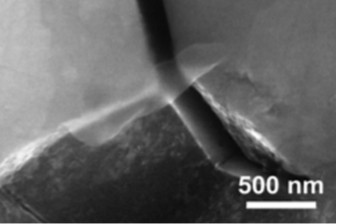The research team found that the tensile strength of alumina was improved after the incorporation of graphene, which overcomes the brittleness of ceramic materials. The technology is simple and time-consuming, and can be used in many industrial equipment such as automotive, aerospace, thermal management, electronic processing and semiconductors. In addition, the process can be used to enhance the tensile properties of other ceramic materials such as silicon carbide, silicon nitride, zirconia and titania. The addition of graphene increases the conductivity of alumina by nearly 100 million times.
The Graphenea team of MONIKER has previously developed a new graphene oxide solution, which was published in the journal of the European Chemical Society. The staff first mixed the graphene oxide solution with alumina, and then used the discharge plasma sintering (SPS) technique to uniformly treat the mixture; SPS released high current in the mixture and produced a new ceramic material in a few minutes.
Graphenea found that after adding only 0.22% of graphene, the tensile strength and crack propagation resistance of ceramic materials increased by more than 50%, and the conductivity was improved by 100 million times. Other aspects of new materials The performance did not change significantly compared to the ceramics in the comparison group where no graphene was added.
Lead researcher Alba Centeno said that the biggest advantage of incorporating trace graphene into alumina is that it greatly improves the electrical conductivity, tensile strength and mechanical properties while keeping other ceramic properties unaffected. While traditional techniques can incorporate another phase in improving a particular property of a material, it inevitably adversely affects other properties of the original material and causes changes in its properties.
Figure 1 is a graphene sheet distributed perpendicularly to the SPS current direction.

Graphene sheets, like shields, protect the material structure in the direction of distribution from crack propagation.

Figure 2 is a graphene sheet frame on the crack of alumina to make the overall structure of the ceramic material stronger and stronger. (Compiled from "Reinforcing Ceramics with Graphene for Increased Strength and Conductivity")
Cold Drawn Steel Flat Bar is produced by cold drawn from hot rolled Steel Flat Bar. Compared to steel Flat Bar cut from the steel plates. Our advantages of cold drawn steel flat bars:
1) Wide range of sizes from (6mm - 80mm)*(20mm - 100mm)
2) Customized Length from 100mm to 12000mm
3) Good straightness: 2mm/m max
4) Precision size tolerance: -0.1mm/+0mm
5) Anti-rusty package
6) Full sets of testing equipment: Surface, Dimenstion. Mechanical properties testing
7) Fast delivery time
Cold Drawn Steel Flat Bar
Flat Bar,Steel Flat Bar,Cold Drawn Flat Bar,Cold Drawn Steel Flat Bar
SHANDONG LE REN SPECIAL STEEL CO., LTD. , https://www.chinasteelok.com